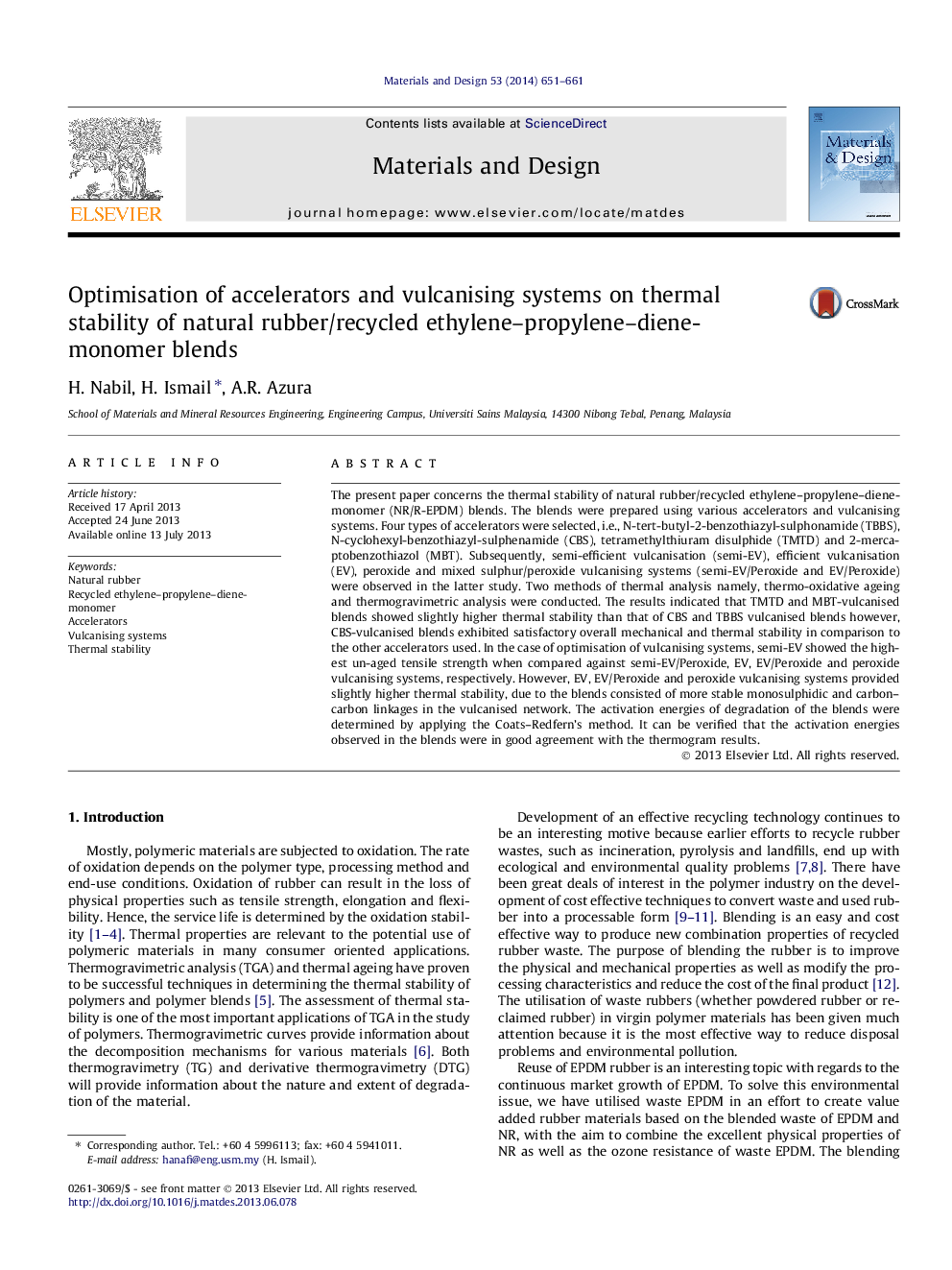| کد مقاله | کد نشریه | سال انتشار | مقاله انگلیسی | نسخه تمام متن |
|---|---|---|---|---|
| 829786 | 1470344 | 2014 | 11 صفحه PDF | دانلود رایگان |
• Accelerator types and vulcanising systems were optimised in NR/R-EPDM blends.
• Two methods of thermal analysis namely thermal ageing and TGA were employed.
• EV and peroxide provided superior thermal stability due to stable –S–S and –C–C– linkages.
• Crosslinking of the blends is a major concern on the retained properties of the blends.
• A CBS-vulcanised using EV system is highly recommended for NR/R-EPDM blends.
The present paper concerns the thermal stability of natural rubber/recycled ethylene–propylene–diene-monomer (NR/R-EPDM) blends. The blends were prepared using various accelerators and vulcanising systems. Four types of accelerators were selected, i.e., N-tert-butyl-2-benzothiazyl-sulphonamide (TBBS), N-cyclohexyl-benzothiazyl-sulphenamide (CBS), tetramethylthiuram disulphide (TMTD) and 2-mercaptobenzothiazol (MBT). Subsequently, semi-efficient vulcanisation (semi-EV), efficient vulcanisation (EV), peroxide and mixed sulphur/peroxide vulcanising systems (semi-EV/Peroxide and EV/Peroxide) were observed in the latter study. Two methods of thermal analysis namely, thermo-oxidative ageing and thermogravimetric analysis were conducted. The results indicated that TMTD and MBT-vulcanised blends showed slightly higher thermal stability than that of CBS and TBBS vulcanised blends however, CBS-vulcanised blends exhibited satisfactory overall mechanical and thermal stability in comparison to the other accelerators used. In the case of optimisation of vulcanising systems, semi-EV showed the highest un-aged tensile strength when compared against semi-EV/Peroxide, EV, EV/Peroxide and peroxide vulcanising systems, respectively. However, EV, EV/Peroxide and peroxide vulcanising systems provided slightly higher thermal stability, due to the blends consisted of more stable monosulphidic and carbon–carbon linkages in the vulcanised network. The activation energies of degradation of the blends were determined by applying the Coats–Redfern’s method. It can be verified that the activation energies observed in the blends were in good agreement with the thermogram results.
Figure optionsDownload as PowerPoint slide
Journal: Materials & Design - Volume 53, January 2014, Pages 651–661
